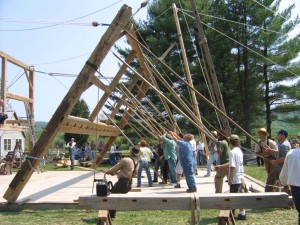No one can innovate alone
 Think of some of the most iconic ancient innovations: the wheel, the arrowhead, pottery. In each case some one knew how to make such a thing, because they were mentored by some one before them knowledgeable in the craft. Each learned a skill which enabled them to replicate a thing of value, hone their skills, and ideally advance the technology to a higher state – perhaps make the wheel lighter, the pottery more resilient to persistent heat.
Think of some of the most iconic ancient innovations: the wheel, the arrowhead, pottery. In each case some one knew how to make such a thing, because they were mentored by some one before them knowledgeable in the craft. Each learned a skill which enabled them to replicate a thing of value, hone their skills, and ideally advance the technology to a higher state – perhaps make the wheel lighter, the pottery more resilient to persistent heat.
But who knows how to craft a camera, or a computer mouse, or a compact fluorescent bulb? Indeed, no one does. Because each of these (and many more) current technological artifacts are concoctions of ideas. A point-and-click camera is (as Matt Ridley puts it) a confection of ideas – silicon, microchips, plastics, lenses, batteries, various refined metals! – all mashed together performing a feat of alchemy that represents a camera as we know it. To take snapshots at our children’s birthdays.
The battery alone is an astonishing marvel. And what individual knows how to make a battery? Well, no one person does. It takes far more than a village. From the miners digging for nickel to the offshore rig operators extracting oil to refine into plastics that are carried in trucks and ships around the world, it takes fractions of mindshare from millions of humans to produce a camera as we know it.
The point is: since it’s nigh impossible to claim credit for singular innovation, we’re at our best when we recognize the deep contributions of all in the value chain which precedes – and follows – whatever we contribute to. The most innovative leaders know how to harness available technology, envision potential future, and enlist others into action.



